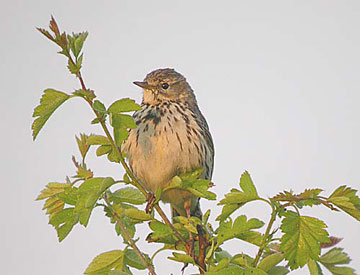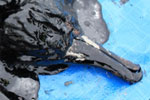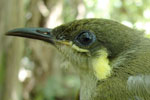Bushmeat, referring to wild animals killed (often illegally) for consumption, is usually considered a conservation problem in developing nations in Africa, Southeast Asia, and South America. However, a recent bust on the Hungarian-Romanian border proves that Europe is not immune: Hungarian officials seized around 10,000 dead songbirds. The birds were likely heading to restaurants in northern Italy according to wildlife trade monitoring group, TRAFFIC.
The illegal haul included Eurasian skylarks (Alauda arvensis), Calandra larks (Melanocorypha calandra), red-throated pipits (Anthus cervinus), bluethroats (Luscinia svecica), European goldfinches (Carduelis carduelis), fieldfares (Turdus pilaris), mistle thrushes (Turdus viscivorus), reed buntings (Emberiza schoeniclus) and white wagtails (Motacilla alba). While none of these species are considered Endangered by the IUCN Red List, some songbirds are in decline in Europe due to habitat loss and pollution in many parts of Europe.
 Small songbirds like the Meadow Pipit are especially targeted by the illegal trade in songbirds. Photo: © Richard Thomas/TRAFFIC. |
Two years ago TRAFFIC released a report detailing the trade from Eastern Europe and Southeast Asia to restaurants in Italy, where the tiny songbirds are considered a delicacy.
“Despite TRAFFIC’s earlier warnings, the illegal trade in songbirds within Europe clearly still continues—a situation the EU should find unacceptable and do its utmost to rectify,” said Katalin Kecse-Nagy, a Senior Program Officer with TRAFFIC, in a press release.
Songbird eating in Europe is not often discussed, but is hardly a secret. Celebrity chef Anthony Bourdain has written about eating the ortolan songbird in France, a meal garnered from a blackmarket trade.
Related articles
Photos: New Zealand oil disaster kills over 1200 birds to date

(10/16/2011) According to the New Zealand government an oil spill from a grounded container ship in the Bay of Plenty has killed 1,250 seabirds with hundreds of others in rescue centers. However, conservationists say the avian death-toll is far higher with most contaminated birds simply vanishing in the sea. “The number of birds being found washed up on the beaches will be a very small proportion of the birds being affected,” explained Karen Baird, Seabird Conservation Advocate with NGO Forest & Bird.
Primary forest best for birds in Papua New Guinea

(09/26/2011) A new survey recorded 125 birds in Papua New Guinea’s Waria Valley, of which an astounding 43 percent were endemic to the island. The survey, published in mongabay.com’s open-access journal Tropical Conservation Science, was the first of its kind for the rainforest-studded valley and found that bird populations were most diverse and abundant in primary forests. The bird surveys were carried out in four different habitats including primary forest, primary forest edges, secondary forest edges, and agricultural landscape.
New seabird discovered from Hawaii, but no one knows where it lives
(08/30/2011) Researchers have uncovered a new seabird native to Hawaii stuffed in a museum. Originally identified as a smaller variation of a little shearwater (Puffinus assimilis), DNA tests showed that the bird, which was collected over four decades ago, was in fact a unique species. Named Bryan’s shearwater (Puffinus bryani), the fate of this bird in the wild remains unknown.